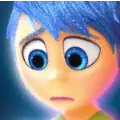"Mad Max: Fury Road" (2015) stands as a magnificent epic, offering more than just stunning desert car chases (filled with imaginative and extravagant custom vehicles), intense warrior battles (embodying a Viking spirit), and profound mythological symbolism (echoing the Exodus and Norse mythology's Valhalla). It delves into the extremes of human nature (good, evil, selfishness, altruism), the evolution of human civilization (authority, human rights, gender issues), and life's essential themes (environment, resources, energy, and society).

The Mad Max Universe
As an art form, cinema often transcends a single time frame, weaving through past, present, and future to create a unique temporal universe like a mythical labyrinth with endless corridors. George Miller's "Mad Max" series is a prime example of this phenomenon. From its inception in 1979 to its reboot in 2015, this series has sculpted a brutal yet mesmerizing cinematic universe through its distinct world-building and temporal dimensions. It starts with the solitary desert wanderer Max. It evolves with the addition of the fierce female protagonist, Imperator Furiosa, all set against the backdrop of Australia's oil-scented desert landscape and the unyielding determination to conquer harsh environments.

The original "Mad Max" debuted in 1979 during the energy crisis triggered by the Iranian Revolution. The resulting spike in oil prices led to global concerns over energy shortages. Against this backdrop, George Miller crafted a violent, lawless post-apocalyptic world.
In the Mad Max universe, the protagonist, Max, begins as a dedicated police officer but loses faith in the system after the brutal murders of his friends and family. He abandons his badge, retreats from the system, and ventures into the wasteland alone. Max's solitary quest for justice and his struggle to survive in an extreme environment elevates "Mad Max" beyond a typical action film into a social allegory reflecting late 20th-century anxieties about environmental degradation, energy crises, and the darker aspects of human nature.

A 20th Century Classic
The second film in the Mad Max series, "Mad Max 2: The Road Warrior" (1981), elevated the franchise to iconic status, solidifying its unique worldview and earning George Miller his first director award (Australian Academy Award for Best Director).
Before watching the 20th-century "Mad Max" films, I assumed that "Mad Max: Fury Road" had little connection to George Miller's earlier works. After all, Max had been recast from Mel Gibson to Tom Hardy, and the story introduced Charlize Theron's Furiosa. Moreover, Max's role seemed somewhat reduced in "Mad Max: Fury Road".

However, after viewing the three original "Mad Max" films, my respect for "Mad Max 2: The Road Warrior" grew immensely. Its dramatic narrative and visually gripping scenes are astonishing, especially considering it was released in 1981.
George Miller's visionary creativity is apparent, showcasing the beauty of high-speed chases, metalwork, and vehicular combat. The lawless desert world, filled with armed and customized vehicles, hostages strapped to hoods, and menacing masks paired with spiked black leather, reappears 35 years later in "Mad Max: Fury Road." These elements leave us in awe in theaters, contributing to the striking allure of the black-and-chrome edition of "Mad Max: Fury Road".
Like "Mad Max: Fury Road," "Mad Max 2: The Road Warrior" presents a world where energy scarcity breeds greed and warmth. Despite the shortage of resources, the world is ironically brimming with gasoline fumes and explosive flames. Those controlling scarce resources become targets of greed and resort to taking hostages. Simultaneously, a flicker of warmth persists as those still holding onto their humanity step up to protect the vulnerable. Max, who initially plans to remain a lone wolf, embraces the goodness and love within him, becoming a protector for the innocent and a surrogate father figure, symbolically making amends for his inability to protect his son in the first film.
A 21st Century Revival and Deepening
In 2015, the "Mad Max" series was revitalized with "Mad Max: Fury Road," which used modern technology and perspectives to reinterpret the classic. Introducing new characters and elements, it continued the series' essence while addressing contemporary issues like environmental degradation, dwindling birth rates, and gender dynamics (heroism and self-rescue).
Building on the themes of "Mad Max 2: The Road Warrior", "Mad Max: Fury Road" is a grand epic of human nature, survival, and perseverance. In this violent, lawless post-apocalyptic world, Max remains a solitary and ruthless antihero, a lost soul seeking redemption. He inadvertently becomes part of Furiosa's truck convoy escape, carrying fuel, women, and an unborn child, eventually embarking on a journey of salvation. Ultimately, Max helps them achieve their goals and quietly departs once again.

Furiosa has become an iconic character deeply rooted in our collective consciousness. She embodies the archetype of the 21st-century woman—self-disciplined, confident, proactive, facing adversity head-on, and fighting for her survival. Furiosa is the true protagonist of "Mad Max: Fury Road". She leads a group of hopeful mothers, attempting to escape the tyrannical rule of Immortan Joe (played by Hugh Keays-Byrne, who also portrayed the motorcycle gang leader in the first "Mad Max"). Despite being the commander of Joe's Citadel, Furiosa harbors a lifelong yearning for freedom and justice.
As the story unfolds, we witness the wild adventures of Max and Furiosa, a series of thrilling battles and strategic maneuvers featuring various customized combat vehicles, motorcycles, and armored trucks. The absurdity and futility of their repeated chases through the same canyon path, the sorrow of losing loved ones, and the eventual glimpse of hope as they plant seeds on a green land, creating the legendary Green Place.
Continuing the legacy of "Mad Max 2: The Road Warrior" and with elements reminiscent of the 20th-century "Mad Max" universe, the 21st-century "Mad Max: Fury Road" offers a broader scope. Notably, George Miller vividly portrays a 21st-century female image—we can face adversity without fear, confront terror, cry, and fight alongside men. Women of this era need not stay behind; they can simultaneously be mothers and heroes of their generation.








Share your thoughts!
Be the first to start the conversation.